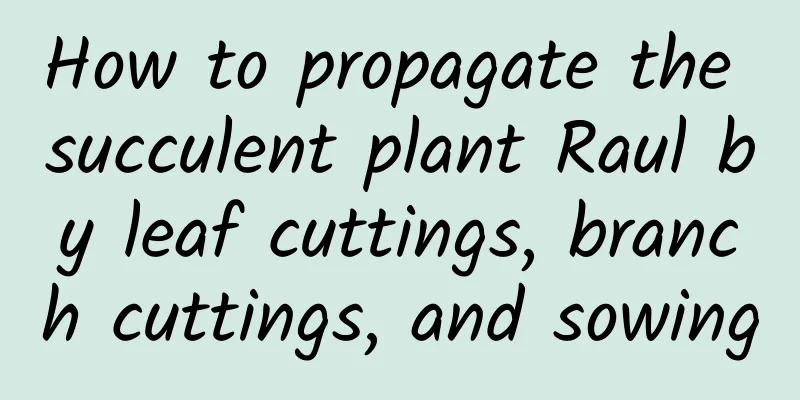Apple tree management technology in December

|
With the arrival of December, heavy snow and the winter solstice also came one by one, the temperature gradually dropped, and the growth activities of the apple trees basically stagnated and began to enter a dormant state. Post-planting care is critical for any fruit tree, and apple trees are no exception. Only through careful management can the quality and yield of apples be ensured. Let’s learn together the key points of apple tree management techniques in December. 1. Winter pruning There are significant differences in the water content, growth condition and yield of apple trees pruned at different times. Compared with trees pruned in March of the following year, apple trees pruned from November to January have a higher content of bound water in their tree tissues, grow more vigorously, bear better fruits, have higher yields, and are more resistant to low temperatures, drought and severe cold. From November to March of the following year, the earlier the pruning, the more beneficial it is to promote the growth of fruit trees; the later the pruning, the less effect it has on promoting tree growth. Through winter pruning, you can balance the tree's vigor, regulate nutrition, reduce the nutrient consumption of the tree by diseased and insect-infested branches and parasitic and useless branches, and reduce the overwintering base of diseases and insect pests. At the same time, it promotes the differentiation of flower bud sexual organs, increases the rate of bud primordium cell division, and ensures high-quality flowers and fruits in the coming year. 2. Renovation of closed gardens The principle of major modifications for larger enclosures, minor modifications for smaller enclosures, and no modifications for non-enclosed gardens should be followed. For small-density orchards , the "slimming method" transformation technology can be used: changing the large-crown tree shape to a small-crown tree shape; changing the sparse layer shape to a free spindle shape; and transforming the free spindle shape into a high spindle shape, a main trunk shape, etc. In orchards with poor soil and high altitudes, where annual growth is small and the problem of airtightness is relatively mild, the original tree shape can be kept unchanged and only local adjustments can be made. For orchards where trunks are forcibly raised and branches are lopped off, the back shoots are seriously growing. Through methods such as branch pulling, branch rotation, and bud cutting to promote flowering, the growth can be switched from vegetative growth to reproductive growth as soon as possible, so that flowers and fruits can be formed. Mature closed orchards should adopt techniques such as thinning, trunk lifting, head dropping and branch thinning to achieve a branch retention rate of 60,000 to 80,000 branches per mu, with a ratio of long, medium and short branches of 15:30:55. 3. Pest and disease control 1. Scrape the old peeled bark, especially the ring-barking (or girdling) mouth and the angle of branches and forks, and bury or burn the scars to eradicate branch diseases. Burn or bury them in a concentrated manner to eliminate overwintering pests and reduce the number of overwintering pests. 2. Scrape and treat rot. In winter, the focus is on checking the main trunk, large branches, twigs, cuts and sawing marks, and old scars from rot. Scaling of recurrent and newly discovered scars. The diseased remains and other diseased and insect-infested branches after scraping should be burned and buried deeply. 3. To prevent and control trunk-boring pests, such as longhorn beetles and jewel beetles, you can insert a thin wire into the insect holes on the branches to kill the larvae. You can also use a syringe to inject 5 to 10 times the concentration of DDT or chlorpyrifos into the holes and then seal the holes with mud. This will kill the pests hiding in the trunk. Some fruit farmers have discovered that injecting an appropriate amount of gasoline into the holes can effectively kill the larvae of longhorn beetles. 4. Clean the orchard in winter, clean up the fallen leaves after the apple leaves fall, remove the diseased fruits, scrape and treat the scars of apple rot, remove the dead branches and fallen leaves after winter pruning, and spray Baume 3-5 lime sulfur mixture in time. 4. Whitewashing of tree trunks The purpose is to reduce sunburn and frost damage to fruit trees and eliminate overwintering pests in cracks in tree trunks. From the time the apple trees shed their leaves to before the soil freezes, prepare a whitewash and apply it to the trunks and main branches. The preparation ratio of whitewash agent: 5-6 kg of quicklime , 1 kg of salt, 12.5 kg of water, 0.05 kg of adhesive, 0.15 kg of animal oil, and 0.5 kg of lime sulfur solution. Pay attention to the concentration of the whitewash so that it does not flow down or form lumps when applied on the tree trunk, and can be applied in a thin layer. In summary, the management priorities of an apple orchard include cleaning the orchard, protecting tree trunks, reducing the overwintering base of pests and diseases, and timely winter pruning and irrigation to ensure that apple trees safely survive the winter and lay the foundation for high-quality and bumper yields in the coming year.
|
<<: What vegetables can be grown in December?
>>: Key points for pear tree management in December
Recommend
How to grow bulbous begonias with large and colorful flowers
Growth habits of bulbous begonia When growing flo...
How long does it take for the green radish cuttings to take root and sprout and grow into a new pot? How long does it take for the cuttings to sprout?
How long does it take for green radish cuttings t...
How much is the yield of Solanum nigrum per mu?
Solanum nigrum yield per mu Solanum nigrum is als...
Is asparagus fern a bamboo? Illustrated instructions for pruning
1. Is it bamboo? Asparagus fern is not a bamboo. ...
Lettuce germination method and time Three major seed germination treatment methods
The purpose of germinating lettuce is to ensure t...
The difference between grass jade and Ji jade
The difference between grass jade and Ji jade Gra...
How to save seeds of honeydew melon
How to keep the seeds of honeysuckle When we eat ...
Characteristics and functions of nitro-sulfur compound fertilizers (crops suitable for nitro-sulfur compound fertilizers)
Nitrate-sulfur based compound fertilizer refers t...
How to breed Huang Qiuying
Seed propagation They have good adaptability and ...
"Office workers" choose these 3 kinds of flowers, they can grow on their own without sun exposure
Don’t worry, there are more than just one kind of...
How to cultivate Daphne koreana
Growing conditions of Daphne koreana Osmanthus fr...
What to do if Gardenia leaves turn yellow and fall off (Causes and solutions)
1. Improve ventilation Reason: Poor air circulati...
The 30 most valuable types of garbage can be used to grow flowers without fertilizing or turning leaves!
Use it to grow flowers and no longer need to fert...
Can green apple arrowroot be hydroponically cultivated? Hydroponics cultivation method
Can green apple arrowroot be hydroponically culti...
The flowers are bigger than the face, one of these flowers is worth a pot of others
Dahlia Flowering period: June-December (Author: Y...









